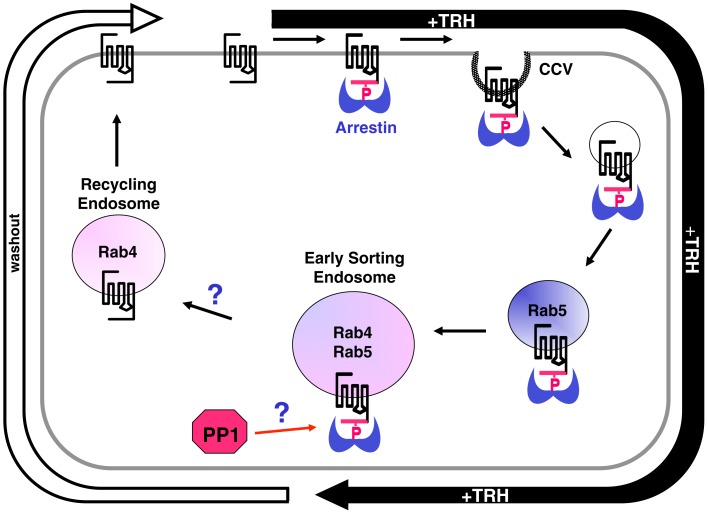Figure 9.
Intracellular trafficking of TRH receptors. TRH activation is rapidly followed by receptor phosphorylation, arrestin binding, and recruitment of the arrestin-phospho-receptor complex to clathrin-coated pits that pinch off in a dynamin-dependent process to form clathrin-coated vesicles (CCVs). Vesicles containing phospho-receptor soon merge with rab5-positive vesicles where they colocalize with transferrin receptors. These vesicles gradually merge with others to form larger endosomes rich in rab4 and rab5, early sorting endosomes. After TRH is removed from the medium, but not before, dephosphorylated receptors start to become detectable in rab4-positive but rab5-negative recycling endosomes. Dephosphorylated receptors then recycle to the plasma membrane. Phosphorylated receptor is rarely seen in these fast recycling vesicles. After long incubations with TRH, small amounts of phospho-receptor are detected in rab11 vesicles, considered to be a slow recycling pool. Protein phosphatase 1 (PP1) acts on the TRH receptor, but it is not known how the removal of extracellular TRH triggers receptor dephosphorylation. The mechanism that permits dephosphorylated receptors to move to recycling endosomes, or alternatively the mechanism that prevents phosphorylated receptors from exiting early sorting vesicles, are also not clear.

